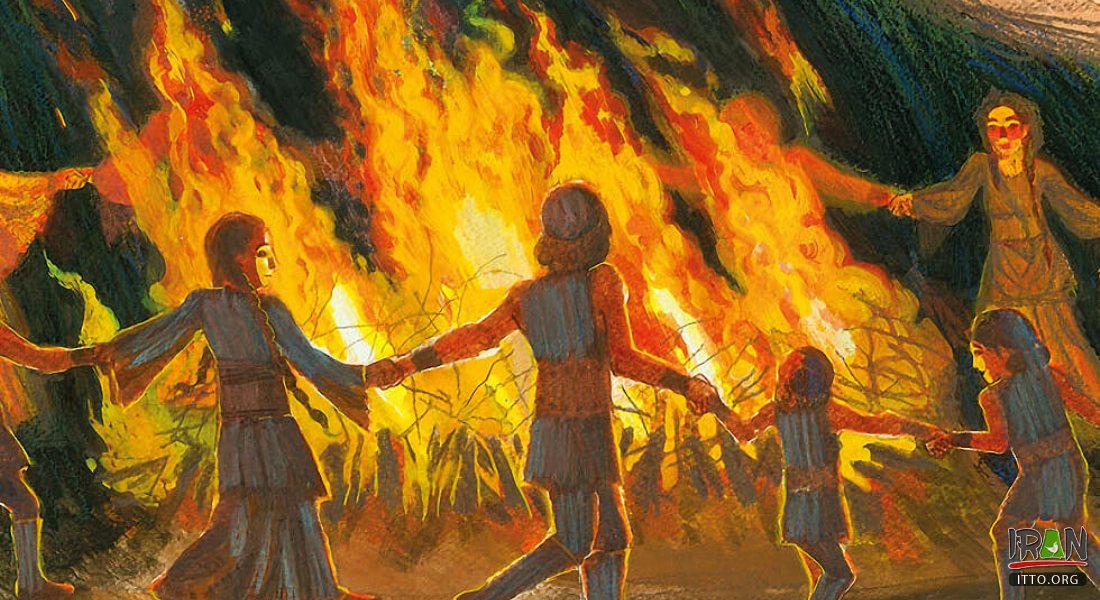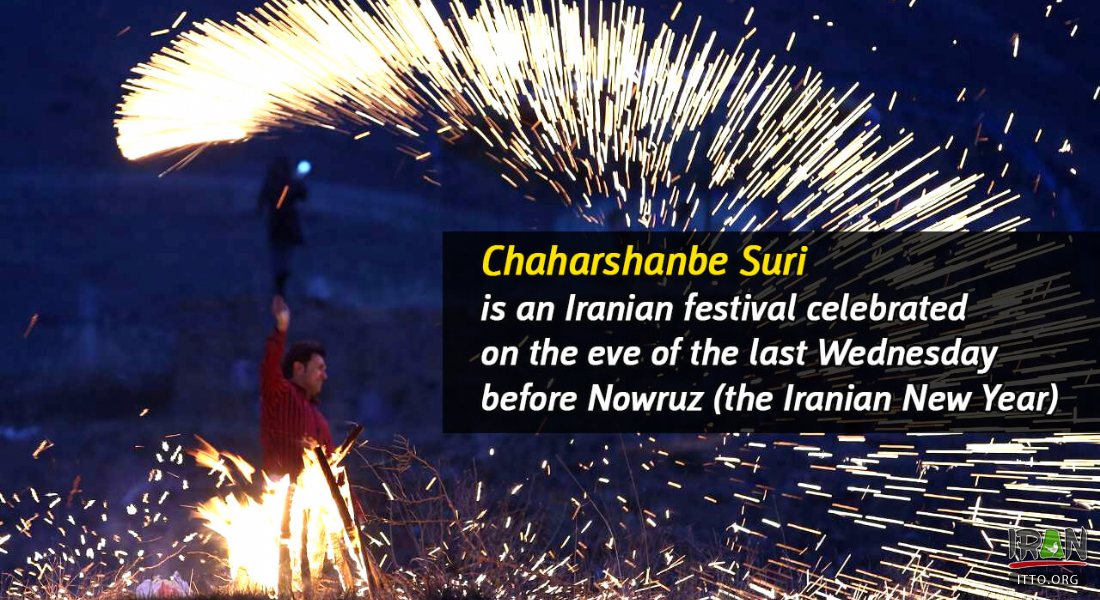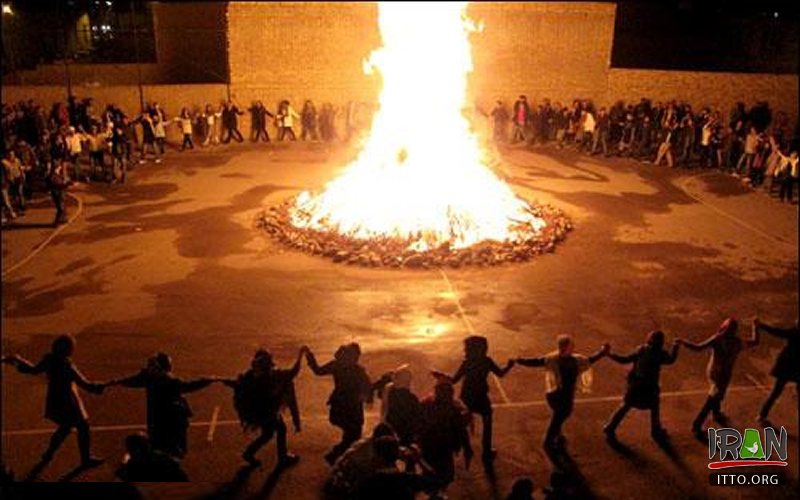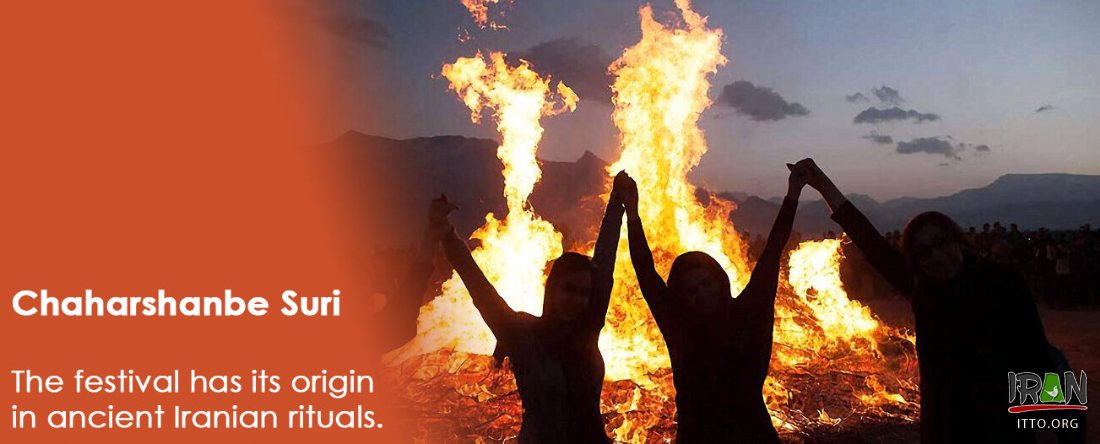The Persian name of the festival consists of čahāršanbe, the name of "Wednesday" in the Iranian calendars, and SURI, most plausibly meaning "red" and referring either to fire or to ruddiness.
On the eve of the last Wednesday of the Persian solar year, known as Chaharshanbe Suri or the Persian Festival of Fire, special customs and rituals take place in which everyone particularly children eagerly participate.

Chaharshanbe Suri is an Iranian festival celebrated on the eve of the last Wednesday before Nowruz.
The term Chaharshanbe Suri is made of two words meaning Wednesday and celebrations/red respectively, where young and old gather around and jump over fires that stay burning all night. These bonfires symbolize kindness, friendship, and light.
The Festival of Fire is a remnant of the ancient religion of Zoroastrianism, where fire represents God‘s light or wisdom. Zoroastrianism was the official religion of Persia (now Iran) from 600 BCE to 650 CE. Around 2000 years ago followers of this doctrine built fire houses and temples where a fire was kept ever burning. The ruins of these sacred sanctuaries are now considered important archaeological sites in Iran, Iraq, and India.

Before the start of the festival, people gather brushwood in an open, free exterior space. At sunset, after making one or more bonfires, they jump over the flames, singing sorkhi-ye to az man, zardi-ye man az to, literally meaning "let your redness be mine, my paleness yours", or a local equivalent of it. This is considered a purification practice.
The festival of Chaharshanbeh Suri has its roots in the Zoroastrian celebrations of the battles of fire against evil. Granted, this time-honored religion does not put a lot of emphasis on rituals, but rather the ethical practices of "Good Words, Good Thoughts and Good Deeds".
Undoubtedly Chaharshanbeh Suri is one of the most popular ways to welcome Nowruz. A specially made mixtures of nuts and dried fruit, called ajil, is a commonly nibbled on throughout the evening. This tasty treat, believed to make one kinder and compassionate, is prepared using salted hazelnuts, pistachios, almonds, prunes, apricots, and raisins. Most notably, during this night Iranians build numerous public bonfires in the streets and jump over them.
A few days before the celebrations, communities in rural areas gather tinders and twigs, and in cities many purchase firewood and fire crackers. Celebrations start early in the evening and continue all night. As participants jump over the fires they chant “zardi-e man az to, sorkhi-e to az man”. meaning “give me your red color and take back my sickly pallor”. This tune is sang to dispose of sickness and difficulties, and to replace that with health, wealth, and happiness for the year to come.
Other rituals of the Chaharshanbeh Suri celebrations include traditions of qashoq zani (banging spoons) and kuze shekani (smashing the pot). In the course of qashoq zani youth cover themselves with textiles and chador, bang on pots and pans with spoons, and go door to door in their neighborhoods.
They keep on hitting on their vessels tirelessly until somebody comes to the door. Girls and boys alike use this as an opportunity to visit their favourite neighbor in disguise and potentially establish a connection with a beloved in the hopes that he or she opens the door. Upon hearing the pots and pans, the homeowners greet the young visitors and place candy, nuts, and other treats in their bowls. This is a similar tradition to trick-or-treating at Halloween.

To round up the festivities, smashing the pot takes place after jumping over the bonfire. This custom symbolizes transferring one’s misfortunes to the pot itself, and breaking the pot so that bad luck is dissipated. This tradition is celebrated with small variations in different regions of Iran. In some provinces some choose an unusable, old pot instead of a new one. Tehranis would place some coins into a jug and drop it from the roof onto the street. In Arak, the pot is stuffed with grains of barley. Throughout Khorasan, a piece of charcoal signifying bad fortune, salt to ward off the evil eye, and some coins for charitable donation are placed into the pot prior to smashing it.
Keeping with the theme of annual cleanse and a fresh start, the Festival of Fire symbolizes finishing the year off with a purification ritual and dissipation of misfortunes. The joyous chants of the youth fill the air and the smell of wood lingers as fireworks light up the skies. Everyone snacks on AJIL and gets in a cheerful spirit to fittingly welcome the Persian New Year.







